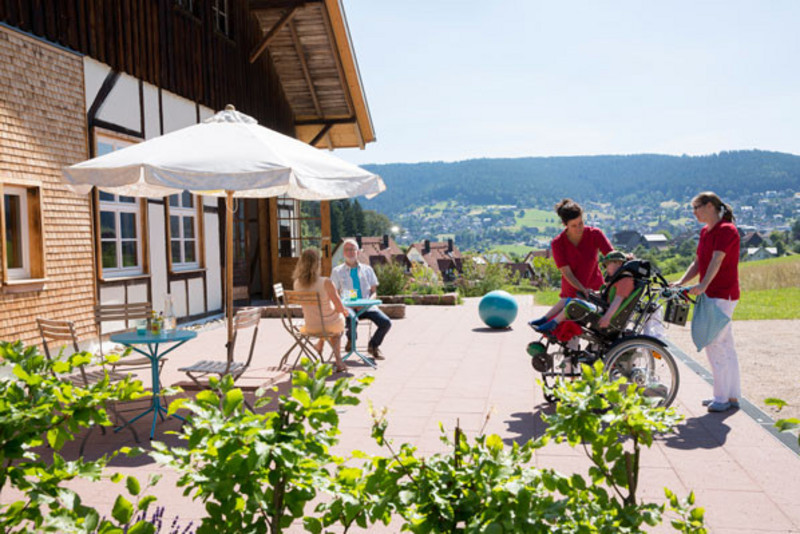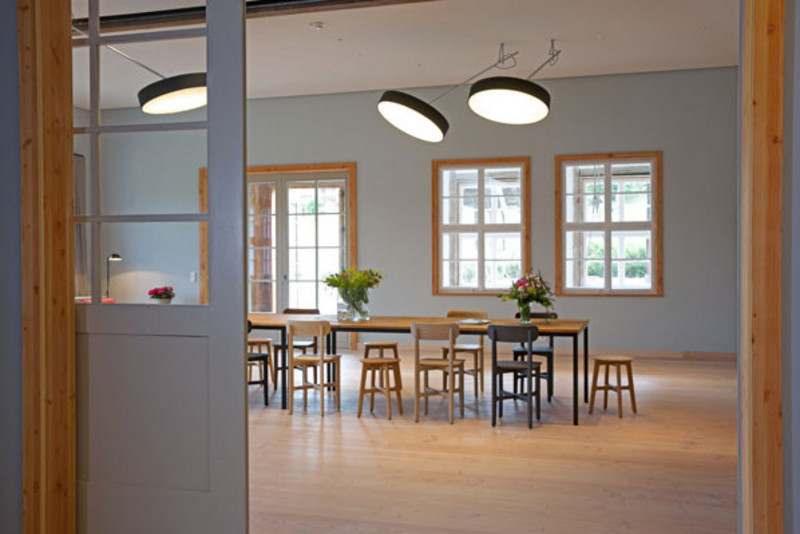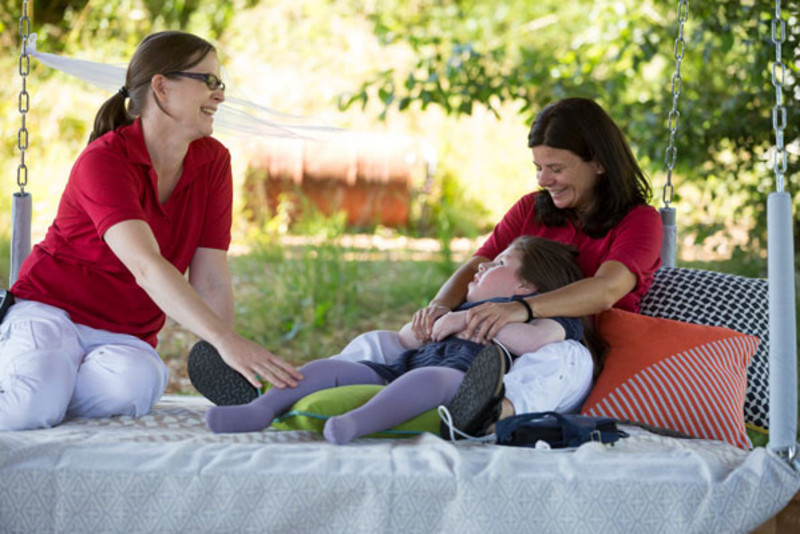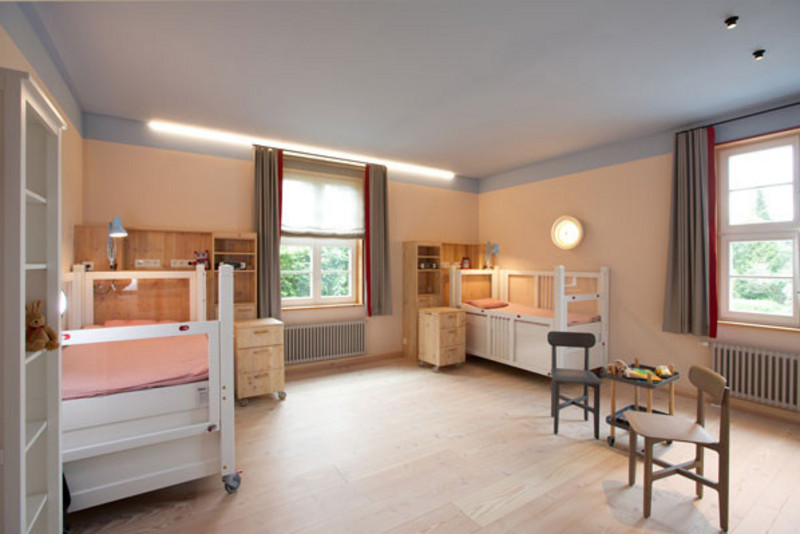Luftikus Children's House – A Breath of Air for Artificially Respirated Children and their Families
Bare walls, grey linoleum floors, neon lighting – the intensive care station is not the kind of place where children and adolescents can develop in age-appropriate ways. Yet some children have to spend a majority of their lives in such an environment because they rely on constant mechanical respiration. Hospital routine and long-term ventilation are required for various reasons: various muscle and nerve diseases, congenital heavy or multiple disabilities and metabolic diseases, or the consequences of tumors, infections, or accidents.
It is estimated that a total of around 2,000 young patients in Germany require continuous artificial respiration through a so-called tracheal cannula and need around-the-clock care. Only a very small number of families can afford this kind of care in their own homes from the start or over a longer period of time. Caring for these children at home is extremely demanding: up to six caregivers per child are necessary to ensure care 24 hours a day. This demands a great deal from families - physically, psychologically and financially.
Breathe Deep, Gather Strength, and Take Courage
The Luftikus organization was founded with this situation in mind – with the goal of creating a very special living arrangement for artificially-respirated children that allows intensive medical care while also encouraging child-appropriate development. With impressive dedication and passion and with the support of various donors, companies, skilled workers, and volunteers, this vision became a reality in 2015. In a former ski factory in the northern Black Forest, initiators Dr. Markus Stiletto and interior architect Birgit Stiletto, together with other members of the Luftikus organization, created a comfortable living facility where up to 10 children and adolescents between 0 and 18 years can find a short-term or long-term home - for example, when care services have not yet been organized locally, or when the affected family requires a break. “Here, everyone can take a deep breath, draw strength, and take courage,” as the website of the children's home states. The idyllic location in the Black Forest also provides two apartments for parents and siblings.
An Expression of Appreciation
In the children's home in Baiersbronn, medical ventilation management is integrated into a warm and inviting atmosphere. Using natural materials and colors as well as lots of light and attention to detail, the initiators have made a successful effort to avoid the impression of a sterile hospital atmosphere. They instead maintained the charm of the old ski factory, laid down a wooden floor, and effectively concealed the medical technology. The lovingly designed atmosphere with modern furniture is, according to Birgit Stiletto, an “expression of appreciation for these families, who live with considerable stress due to the heavy burden of caring for a disabled child. And naturally for the children and young people, who are unfortunately seldom surrounded by beauty, due to the necessity of technical equipment.”
Quality of Life and a Familial Community
All of the nursing and care strategies in the Luftikus children's home are intended to ensure the highest degree of wellbeing, independence, and normality for the children and their families. The relaxed, homey atmosphere creates a familial community and opportunities to spend time with healthy children of the same age. Training for family members as well as curative and therapeutic support for the young patients are likewise on offer. With occupational, art, and music therapy, the children's home goes far beyond the necessary medical and nursing care and supports the children on an individual basis in their emotional, intellectual and social development. Pediatrician Dr. Markus Stiletto believes that (re-)securing and improving communicative and cooperative abilities is the key to integration and participation in an active life in society.
An Initiative with a Greater Purpose
Inclusive approaches and setups that provide relief for affected families are rare. Besides the Luftikus children's home, there is just one other institution in Baden-Wüttemberg with 14 places where preschool-aged children who require long-term artificial respiration can live permanently. Yet in Baden-Wüttemberg alone, the need is considerably larger, with 275 children and young people on permanent respiration. Nationwide, there were, until a few years ago, very few institutions that catered to the needs of artificially respirated children and their families; one of these is the AtemReich children's home in Munich.
It is significant, Birgit Stilettos observes, that the existing facilities have largely arisen thanks to private initiatives, rather than through the efforts of public institutions. She recognizes that one can only summon and maintain the energy, strength, hope, and fantasy required for such a project when one finds a larger sense of meaning and purpose in the work. “We hope that these children are able to live a life that is as worth living, as it is in our power to make it possible for them,” she says. “Because they are just as much God's creation as all of us who interact with them.”
It was this conviction that convinced the Software AG Foundation to support this new care initiative, as project manager Jana Weische explains. “Although the developments among these children and young people may seem minimal to us, for children on permanent ventilation, these are great strides forward on the path of life.”




